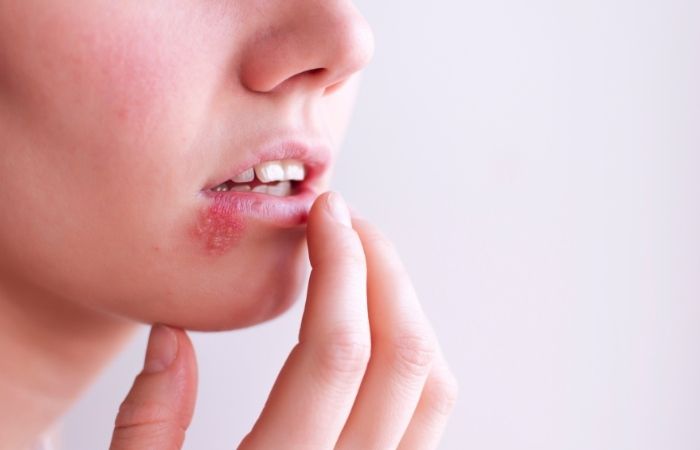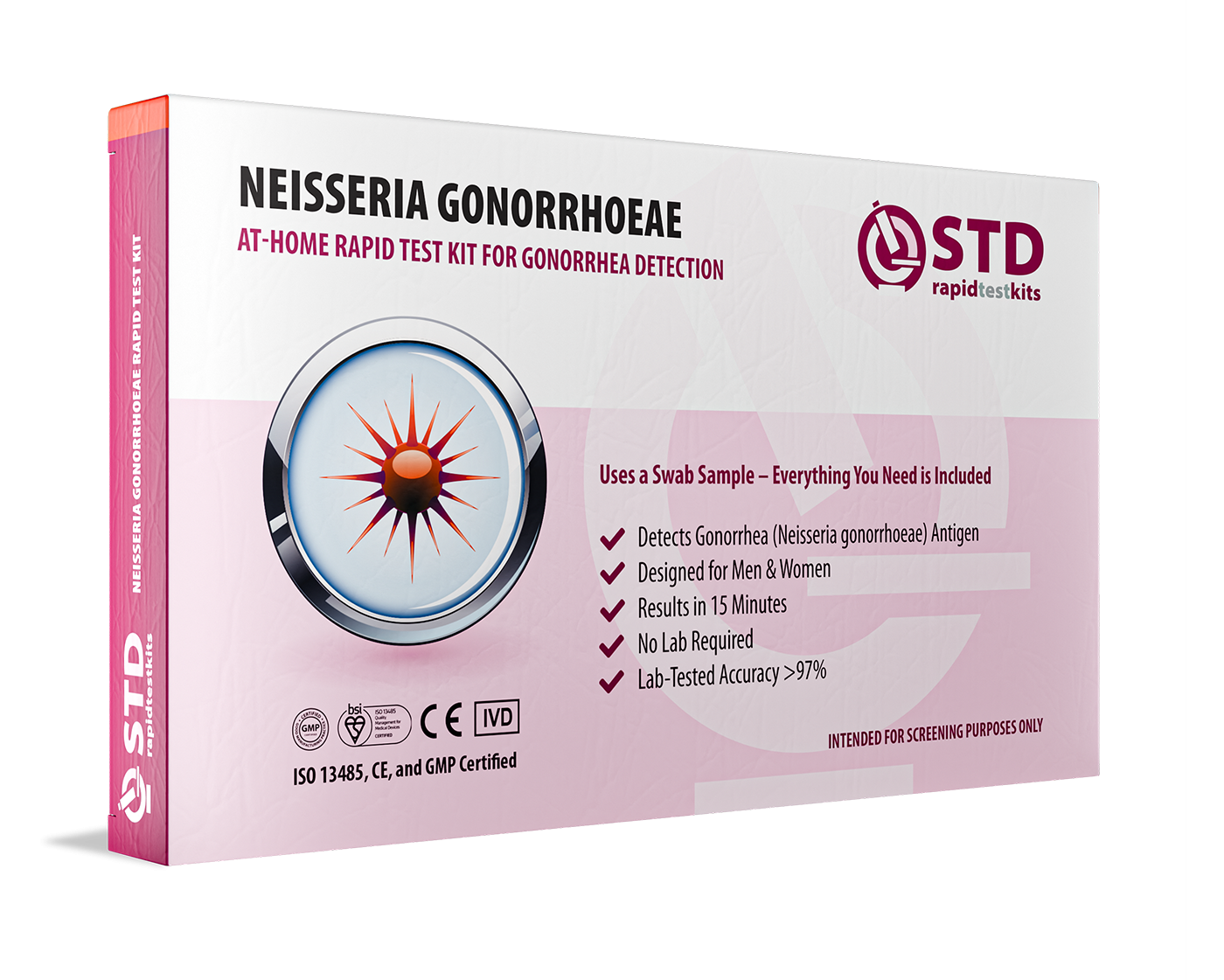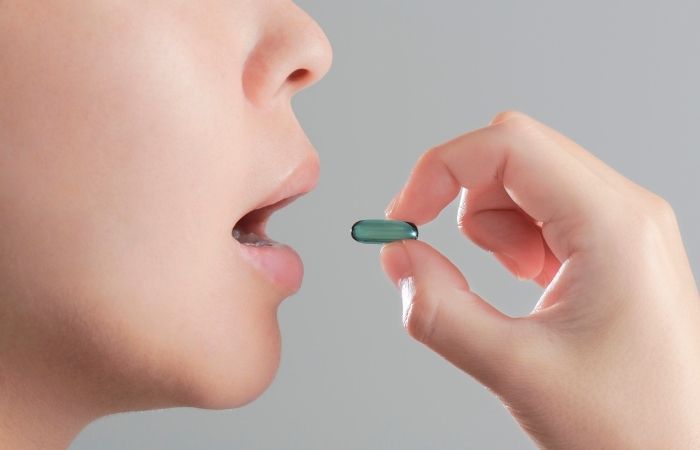Quick Answer: Yes, you can get an STD from oral sex, especially gonorrhea, chlamydia, herpes, and syphilis. Symptoms in the throat may include soreness, white patches, swollen lymph nodes, or no signs at all. Testing is the only way to know for sure.
This Isn’t Just a Cold, And Here’s Why
There’s a reason so many people miss the signs of oral STDs: they often mimic everyday stuff like strep, allergies, or even spicy food backlash. But when a sore throat comes out of nowhere, especially after oral sex, it’s worth taking a closer look. Some STDs can hang out in your throat silently for weeks or months, spreading without a hint of drama.
Here’s the twist: the absence of pain doesn’t mean the absence of infection. In one study published in 2021, more than 75% of people with oral gonorrhea reported no symptoms at all. Yet they could still transmit it to others. Same goes for oral chlamydia, which can live quietly in the throat and show up only on a swab test.
On the other hand, when symptoms do appear, they can be hard to distinguish from normal sore throats, except that they tend to linger longer, feel “different,” or appear shortly after oral sex with a new partner.
What Oral STD Symptoms Actually Look and Feel Like
Let’s break down the mouth and throat symptoms you might notice. Keep in mind: some people experience just one. Others, none at all. But any of these could be signs of an oral STD, especially if they show up days to weeks after oral sex:
| Symptom | Possible STD | Typical Onset | Notes |
|---|---|---|---|
| Sore throat without other cold symptoms | Gonorrhea, Chlamydia | 2–5 days after exposure | Often confused with allergies or dry air |
| White patches or spots on tonsils | Gonorrhea, Syphilis | 5–10 days | Can look like strep throat |
| Swollen lymph nodes under jaw | Herpes, Syphilis | Varies | May feel tender when pressed |
| Small ulcers or sores inside mouth | Herpes, Syphilis | 7–14 days | Often painless and missed |
| Persistent metallic taste or bad breath | Gonorrhea, Chlamydia | Ongoing | May suggest bacterial activity |
Table 1. Common symptoms of oral STDs and their typical appearance timelines. These can overlap with other illnesses, which is why testing is essential.

People are also reading: Oral Sex, Real Talk: The Mouth-to-Genitals STD Playbook Nobody Gave You
Case Study: “I Thought It Was Just a Sore Throat”
Lorenzo, 27, had recently gotten back into dating after a long-term relationship. He hooked up with someone at a weekend camping festival and gave oral sex. Five days later, his throat felt scratchy, but there was no fever, just irritation. He figured it was smoke from the bonfire or allergies from sleeping in a tent.
“It didn’t even hurt that much. I didn’t think it was worth worrying about,” he recalled. But the scratchy feeling didn’t go away. After a week, a single white patch showed up near his tonsil. Still no other symptoms. When a partner mentioned they’d tested positive for gonorrhea, he got tested too. Sure enough, positive for oral gonorrhea.
“I was shocked. I always thought oral sex was ‘safe’ sex. No one talks about this stuff.”
Lorenzo’s story isn’t rare. Most people don’t associate oral sex with risk, until they get a call, or a result, that says otherwise.
Check Your STD Status in Minutes
Test at Home with RemediumGonorrhea Test Kit

 For Men & Women
For Men & Women Results in Minutes
Results in Minutes No Lab Needed
No Lab Needed Private & Discreet
Private & DiscreetOrder Now $33.99 $49.00
Can You Get Tested for Oral STDs?
Yes, but here’s the catch: unless you ask for throat testing specifically, it often doesn’t happen. Many clinics default to urine tests or genital swabs, which won’t detect infections in the mouth or throat. If you had oral exposure (gave oral sex), it’s important to request an oropharyngeal swab.
Some at-home tests, like the STD Rapid Test Kits, are designed for genital samples. If you’re concerned about an oral infection, you may need a provider-guided test or clinic visit. That said, some mail-in labs do offer oral swab options, check the details before you buy.
If your exposure was recent (within the past 1–2 weeks), testing may still be within the window period. That means your test could miss the infection, especially with gonorrhea or chlamydia, and you might need to retest later for confirmation.
How Long Do Oral STDs Take to Show Up?
If you’re Googling symptoms or staring at your throat in the mirror, timing matters. Every STD has its own window period, the time between exposure and when a test can reliably detect the infection. That’s different from the incubation period, which is when symptoms (if any) begin to show.
Think of it this way: you could have an infection brewing silently while your body hasn’t produced enough markers for a test to detect, or symptoms to appear. And when the symptoms do pop up, they’re often subtle, especially in the throat.
| STD | Incubation (Symptoms May Start) | Test Detection Window | Can It Be Silent? |
|---|---|---|---|
| Gonorrhea | 2–5 days | 7–14 days | Yes, up to 90% of oral cases |
| Chlamydia | 5–10 days | 7–21 days | Yes, often symptomless |
| Herpes (HSV-1 or HSV-2) | 4–12 days | Can show up via PCR or culture when lesions are present | Yes, especially HSV-1 |
| Syphilis | 10–90 days (average ~21) | 3–6 weeks for accurate antibody test | Yes, early sores can go unnoticed |
Table 2. Typical symptom onset and testing windows for oral STDs. If you test too early, you may need to retest after the window period ends to be certain.
So what’s the move? If you’re within 1 week of oral exposure, it’s often best to wait a few days before testing. Or test now, then again after two weeks. This layered approach gives you both peace of mind and diagnostic accuracy.
If you’ve already passed the window period and are experiencing symptoms, or even if you’re not, it’s still worth getting tested. Many people test positive without symptoms, especially with gonorrhea and chlamydia.
Why Oral Sex Feels “Safe” (But Isn’t Always)
Let’s name the bias: oral sex gets treated like a free pass. No condoms, no worries. Most sex ed programs skip over it entirely, and even doctors can downplay the risks. But the science is clear: oral transmission is real, and it doesn’t take ejaculation, deep throating, or “rough” contact to happen.
Skin-to-skin contact, mucosal exposure, and even tiny abrasions in the mouth can let viruses or bacteria in. And it goes both ways, giving and receiving oral sex can transmit infections.
Here’s where it gets tricky. Because oral sex isn’t always perceived as “real” sex, people are less likely to disclose it during sexual health screenings. That means fewer people get throat swabs, fewer infections get diagnosed, and the cycle continues.
This space is important. A study in the Journal of Infectious Diseases in 2022 found that oral gonorrhea that isn't treated can stay in the body for months without anyone noticing.
Treatment for Oral STDs: What Happens Next
If your oral STD test comes back positive, don't worry. Most of the time, a short course of antibiotics or antivirals will get rid of these infections. But timing is very important. You can stop the spread sooner if you know sooner.
Most of the time, people with gonorrhea or chlamydia get antibiotics by mouth or by injection. If you have oral herpes and outbreaks are painful or happen often, your doctor may give you antivirals like acyclovir. Most of the time, people with syphilis get a penicillin shot, even if it's in their mouth.
Don’t skip the follow-up. After treatment, you may need to wait 7 to 14 days before re-testing to confirm clearance, especially for throat infections, where bacteria may persist longer than in the genitals. Also, let any recent partners know so they can get checked, too.
This isn’t about blame, it’s about breaking the chain of reinfection. One at-home option, like the Combo STD Home Test Kit, lets partners test privately and proactively.

People are also reading: Vaginal vs. Penile Symptoms: How Detection Differs by Genitals
How to Protect Yourself Going Forward
You don’t need to give up oral sex to stay safe. But if you’re sexually active, especially with new or multiple partners, it pays to be strategic. That could mean using condoms or dental dams, especially with casual hookups. It also means normalizing regular testing that includes throat swabs when needed.
Many people use oral sex as a “safe” alternative without realizing the risks. That’s not your fault, but it is your power now. The more you know, the better you can protect yourself and your partners.
And if your head is spinning? Peace of mind is one test away. You can discreetly order a combo test kit here to screen for multiple STDs from home.
Check Your STD Status in Minutes
Test at Home with Remedium10-in-1 STD Test Kit

 For Women
For Women Results in Minutes
Results in Minutes No Lab Needed
No Lab Needed Private & Discreet
Private & DiscreetOrder Now $189.00 $490.00
For all 10 tests
What If You’ve Already Hooked Up Again?
Let’s be real: most people don’t stop having sex while waiting for test results, especially if they feel fine. Maybe you gave oral again. Maybe you got back with an ex. Maybe you thought, “It’s probably nothing.” We get it.
But here’s the thing: the more time passes without clarity, the more chances an infection has to keep moving. That doesn’t make you reckless, it makes you human. The good news? It’s never too late to draw a line in the sand. One test, one step, one deep breath, and you’re back in control.
Case in point: Eli, 32, had a sore throat after a Tinder date but ignored it. He brushed it off as post-hookup dehydration. Two weeks later, he was back with his situationship partner, still no symptoms, still no test. When that partner tested positive for gonorrhea, Eli had to circle back through not one, but two awkward disclosures.
“I kept thinking, ‘If I had just gotten swabbed that first week...’”
There’s no shame in delayed action. But there is power in informed choice. Whether you’ve already hooked up again or you’re in that “should I, shouldn’t I?” limbo, knowledge changes everything. Testing doesn’t lock you down, it gives you options. It tells you whether to treat, retest, or breathe easy.
If you’re not sure where to start, head here: STD Rapid Test Kits offers discreet, fast shipping and accurate results you can trust.
This Doesn’t Have to Be a Mystery
Oral sex isn't safe, but that doesn't mean it has to be. You can protect yourself without fear or shame if you have the right information, timing, and tools. You don't have to be perfect. You just have to stay curious, stay open, and do something when something doesn't feel right.
So whether your throat is scratchy or your anxiety is louder than any symptom, here’s your invitation: check in with yourself. Ask the hard question. And if the answer is “maybe,” there’s a test that can tell you for sure.
Because in the end, it’s not just about throat swabs or lab results. It’s about your body, your boundaries, and your peace of mind.
Take that step, this combo kit makes it easy, private, and fast.
FAQs
1. Can you really catch chlamydia or gonorrhea just from oral?
Yes. It's not a myth, not a technicality, it’s real. If you’re giving oral sex to someone with chlamydia or gonorrhea, you can absolutely pick it up in your throat. You won’t always feel it, and it might not show up for days. But it happens more than people think, especially because most of us aren’t swabbing our throats during routine testing.
2. What’s the difference between an STD sore throat and a normal one?
Honestly, it can be hard to tell, especially early on. A cold usually comes with other symptoms like congestion, sneezing, or body aches. But if you’ve got a scratchy throat that’s just...lingering, or white patches without the full “I’m sick” vibe, that’s your cue. Especially if you gave oral sex in the last week or two. Trust your gut, if it feels off, get it checked.
3. How fast do oral STD symptoms show up?
Depends on the infection. Gonorrhea and chlamydia can show up in as little as two to five days, or not at all. Herpes tends to break out within a week or two, usually as small sores or swollen glands. And syphilis? That one plays the long game, sometimes taking up to three weeks or more to cause visible signs. Timing matters, which is why retesting is sometimes part of the plan.
4. Can you get herpes in your mouth even if they didn’t have visible sores?
Unfortunately, yes. Herpes doesn’t need to be showing to be contagious. A person can shed the virus from their skin even when everything looks normal. That means you could get HSV-1 or HSV-2 from oral sex with someone who doesn’t have any visible blisters. It’s sneaky like that.
5. Do I need to ask for a throat swab, or is it included in a standard STD test?
Ask. Always ask. Most clinics do not automatically include throat swabs unless you tell them you gave oral sex. And most at-home test kits don’t include oral testing either. If you’ve had oral exposure, be your own advocate and say it clearly: “Can I get a throat swab too?”
6. Is it possible to get syphilis from kissing?
Yep, if your partner has a syphilis sore (called a chancre) in or around their mouth. It’s not the most common route, but it happens. Think of syphilis like a ghost that can show up anywhere on the body, including inside the mouth. Kissing isn’t totally risk-free if someone’s in that contagious stage.
7. Can I pass a throat STD to someone else through oral sex?
100% yes. If you’ve got untreated gonorrhea or chlamydia in your throat and you give oral sex, you can pass it on. That’s how a lot of these infections keep moving, quietly, without symptoms. It’s one of the biggest reasons testing matters, even if you feel fine.
8. How do I protect myself during oral sex without killing the vibe?
Great question, and there are options. Condoms for oral on a penis. Dental dams or non-microwavable plastic wrap for oral on a vulva or anus. It’s not about “ruining the moment”, it’s about finding what feels right and keeps everyone safe. Lube helps, flavored condoms exist, and trust us: confidence is sexy.
9. Will antibiotics clear an oral STD just like a genital one?
Yes, most of the time. Most of the time, the same medications work, but the throat can be a little stubborn, especially when it comes to gonorrhea. That's why it's often a good idea to get tested again to make sure it's really gone. Don't skip treatment, and don't think you're free until a doctor says you are.
10. What if I tested negative, but my throat still feels off?
That can happen. You may have tested too early, or the infection is in a spot your test didn’t cover. It’s also possible your symptoms are from something else, acid reflux, a different infection, even allergies. But if it doesn’t go away or gets worse, retest. Advocate for yourself. It’s your body, and you know when something isn’t right.
You Deserve Answers, Not Assumptions
It’s easy to brush off a sore throat or a weird taste in your mouth. But when you’ve recently given or received oral sex, those small signs might mean something more. Oral STDs aren’t just possible, they’re surprisingly common, especially among young adults and people who aren’t routinely screened.
Testing doesn’t mean you did something wrong. It means you care about your health, and your partners’. Whether you’re worried about gonorrhea in the throat, possible herpes exposure, or just want clarity, there’s a way to know for sure.
Don’t wait and wonder, get the clarity you deserve. This at-home combo test kit checks for the most common STDs discreetly and quickly.
How We Sourced This Article: To make this guide helpful, compassionate, and accurate, we drew on peer-reviewed research, real-world experience reports, and the most recent recommendations from leading medical organizations.
Sources
1. About Sexually Transmitted Infections (STIs) | CDC
5. Factors associated with pharyngeal gonorrhea in young people | NCBI PMC
6. The Duration of Pharyngeal Gonorrhea: A Natural History Study | PubMed
7. Gonorrhea: Symptoms & Causes | Mayo Clinic
About the Author
Dr. F. David, MD is a board-certified infectious disease specialist focused on STI prevention, diagnosis, and treatment. He blends clinical precision with a no-nonsense, sex-positive approach and is committed to expanding access for readers in both urban and off-grid settings.
Reviewed by: M. Reyes, RN, MPH | Last medically reviewed: October 2025
This article is for informational purposes and does not replace medical advice.










